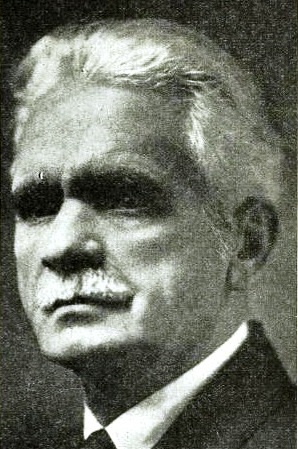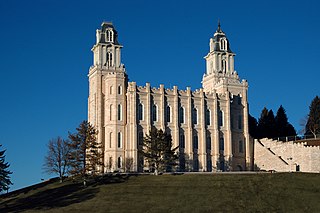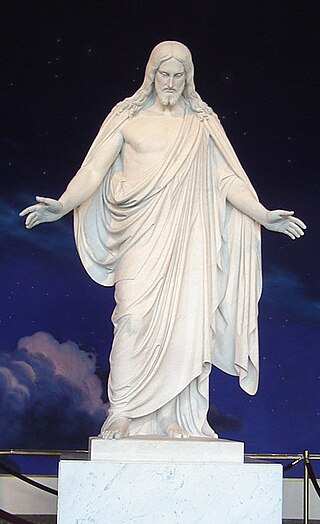Content
For LDS Church members, the pageant was a faith-promoting family event. The pageant portrayed the relationship and chronology of three separate, but related, faith-promoting accounts. Opening with the experiences of the church's first president, Joseph Smith, during his young-adulthood in the burned-over district of New York in the 1820s. Including the recovery and translation of the Book of Mormon, the restoration of the "Church of Christ" in 1830 (which was renamed "The Church of Jesus Christ of Latter-day Saints" in 1838) and its infancy, and the death of Smith in 1844. During the dramatization of the translation of the Book of Mormon an overview of its contents it presented. The wars and contentions of the native Israelite inhabitants of North America are represented, along with their teachings of Jesus Christ, leading to his post-resurrection appearance in the first century A.D. The pageant concludes with the persecution of the Mormon pioneers in the East and their subsequent exodus to Utah, led by the church's second president, Brigham Young, and the group of pioneers sent to central Utah (now Sanpete Valley), where the Manti Utah Temple stands.
The performance began shortly after sunset, during the early summer (usually late June), with people often arriving several hours before the performance. In addition to restaurants in the town, there were special food stands for the event. Light security was provided at the performance site and the surrounding streets to ensure general order and to direct traffic.

Brigham Young was an American religious leader and politician. He was the second president of the Church of Jesus Christ of Latter-day Saints from 1847 until his death in 1877. During his time as church president, Young led his followers, the Mormon pioneers, west from Nauvoo, Illinois, to the Salt Lake Valley. He founded Salt Lake City and served as the first governor of the Utah Territory. Young also worked to establish the learning institutions that would later become the University of Utah and Brigham Young University. A polygamist, Young had at least 56 wives and 57 children. He formalized the prohibition of black men attaining priesthood, and led the church in the Utah War against the United States.

Manti is a city in and the county seat of Sanpete County, Utah, United States. The population was 3,429 at the 2020 United States Census.
In Mormonism, the restoration refers to a return of the authentic priesthood power, spiritual gifts, ordinances, living prophets and revelation of the primitive Church of Christ after a long period of apostasy. While in some contexts the term may also refer to the early history of Mormonism, in other contexts the term is used in a way to include the time that has elapsed from the church's earliest beginnings until the present day. Especially in the Church of Jesus Christ of Latter-day Saints "the restoration" is often used also as a term to encompass the corpus of religious messages from its general leaders down to the present.

The True and Living Church of Jesus Christ of Saints of the Last Days (TLC) is a breakaway sect of the Church of Jesus Christ of Latter-day Saints. It is headquartered in Manti, Utah, United States, where as of 2004 it maintained a membership of 300 to 500 adherents. The church has a meetinghouse in Manti, and in the past also owned a building in Manti called the Red Brick Store, not to be confused with the Red Brick Store in Nauvoo, Illinois.

Brigham Henry Roberts was a historian, politician, and leader in the Church of Jesus Christ of Latter-day Saints. He edited the seven-volume History of the Church of Jesus Christ of Latter-day Saints and independently wrote the six-volume Comprehensive History of the Church of Jesus Christ of Latter-day Saints. Roberts also wrote Studies of the Book of Mormon—published posthumously—which discussed the validity of the Book of Mormon as an ancient record. Roberts was denied a seat as a member of United States Congress because of his practice of polygamy.
William Harrison Folsom was an architect and contractor. He constructed many of the historic buildings in Utah, particularly in Salt Lake City. Many of his most prominent works were commissioned by the Church of Jesus Christ of Latter-day Saints. For a time he was sustained as the Church Architect, a calling in the church.

Isaac Morley was an early member of the Latter Day Saint movement and a contemporary of both Joseph Smith and Brigham Young. He was one of the first converts to Smith's Church of Christ. Morley was present at many of the early events of the Latter Day Saint movement, and served as a church leader in Ohio, Missouri, and Utah Territory.

Titus Billings was an early convert to the Latter Day Saint movement. He served in several positions in the church and was a contemporary of Joseph Smith and Brigham Young. Billings was a counselor in the first Bishopric of the Church to Edward Partridge. He participated in the Battle of Crooked River and was a colonel in the Nauvoo Legion. He participated in the Mormon migration as a Captain of Fifty in the second company and was a notable settler of Manti, Utah.

Charles Wilson Nibley was a Scottish-American religious leader, businessman, and politician. Nibley was a member of The Church of Jesus Christ of Latter-day Saints and served as the fifth presiding bishop of the Church of Jesus Christ of Latter-day Saints between 1907 and 1925 and a member of the church's First Presidency from 1925 until his death. He was also a businessman and was involved in various industries, such as lumber, sugar, and railroads.

The Manti Utah Temple is the fifth constructed temple of the Church of Jesus Christ of Latter-day Saints. The temple construction was completed in 1888. Located in the city of Manti, Utah, it was the third Latter-day Saint temple built west of the Mississippi River, after the Mormon pioneers trekked west. The Manti Temple was designed by William Harrison Folsom, who moved to Manti while the temple was under construction. The temple dominates the Sanpete Valley and can be seen from many miles. Like all Latter-day Saint temples, only church members in good standing may enter. It was previously one of only two remaining Latter-day Saint temples in the world where live portrayal was used in the endowment ceremony. All other temples use a film in the presentation of the endowment, a practice that will also be used in Manti beginning in 2024 following renovation. It is an early pioneering example of four rooms representing the journey of life.

Welcome Chapman was an early leader in the Church of Jesus Christ of Latter-day Saints born in Readsboro, Vermont. Chapman was the leader of the Latter-day Saint settlers in Manti, Utah, from 1854 to 1862, and helped broker peace between the settlers and Chief Wakara's tribe.

Minerva Bernetta Kohlhepp Teichert was a 20th-century American artist who painted Western and Mormon subjects, including murals of scenes from the Book of Mormon. She received her art education from the Art Institute of Chicago and the Art Students League of New York, and was a member of the Church of Jesus Christ of Latter-day Saints. Religious-themed artwork by Teichert includes Christ in a Red Robe, Queen Esther, and Rescue of the Lost Lamb. She painted 42 murals related to stories in the Book of Mormon which reside in Brigham Young University's (BYU) Museum of Art. Teichert was the first woman invited to paint a mural for an LDS Church temple.
Janne Mattson Sjödahl was a Swedish convert to the Church of Jesus Christ of Latter-day Saints and was the author of influential commentaries on LDS Church scriptures. Sjödahl was among the first commentators to advance a "limited geography model" for the theorized geography of the Book of Mormon.

Alexander Neibaur was the first dentist to practice in Utah and the first Jew to join the Latter Day Saint movement. He was educated for the profession at the University of Berlin and was a skilled dentist before the establishment of dental schools in America. He was fluent in 7 languages and as many dialects.

The Church of Jesus Christ of Latter-day Saints in Utah refers to the Church of Jesus Christ of Latter-day Saints and its members in Utah. Utah has more church members than any other U.S. state or country. The LDS Church is also the largest denomination in Utah.

The following outline is provided as an overview of and a topical guide to the Church of Jesus Christ of Latter-day Saints.
This is a bibliography of works on the Latter Day Saint movement.













